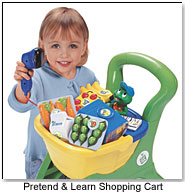
April 2, 2025


The news about television’s effect on children’s attention span created quite a stir this spring. Negative press about video content, and even the television medium itself, just keeps on coming. Warnings from child development experts about the relationship between television-watching and attention disorders started as early as 1979, but were largely ignored. The American Academy of Pediatrics recommended severely restricting television-viewing by young children in 1999, which again had little impact.
This past April, however, hard evidence about television’s negative effects on attention was reported in the journal Pediatrics, and the media buzzed with the news. The article about a study of nearly 1,500 children revealed problems in concentrating, thinking clearly, and in restless and impulsive behavior. Considering that 25% of all toddlers have a television in their bedrooms, and nearly half of all toddlers watch television every day, the attention and behavior problems stand to exceed epic proportions.
Caring parents will want to fire their “electronic babysitters” and find other ways to amuse and develop their young. They will likely purchase more toys to replace time currently occupied by television. Most importantly, they will seek more education about toys, as well as manufacturers’ assurances about the impact of toys.
The toy industry has an opportunity, and some might suggest a responsibility to develop ways to counteract television’s negative effects on children who have already watched television too early, and to attract children away from television. Toy manufacturers and retailers can gain in trust and reputation by understanding the implications of these current trends and assisting parents.
A Too-brief PrimerThe young child’s developing brain needs more interaction and less stimulation than television can provide. Neurons grow at a rapid rate, and become part of an intricate network of connections through experience. The development of neurons and networks heavily influences the ability to learn and interact with the environment. The rapid-fire pace of images on television is a “double whammy”: it overstimulates the neurons as well as prevents a connection to meaning. Television is a passive medium—it requires no viewer action in order to gain the attention of a mind.
Constructive and Counteractive ToysThe tide of concern over television implies a growing market for two types of products, constructive and counteractive. Constructive toys build memory and attention, and foster the development of meaning in the child’s environment. Counteractive toys balance or undo the damage already done by watching television. They would be interactive and slow-paced.
 Good examples of counteractive toys are the 8-in-1 Adjustable Playground by Little Tikes, and the Pretend and Learn Shopping Cart by LeapFrog. Constructive toys include particular board games such as Concentration, K’NEX construction kits, and puzzles such as the Tangoes line by Rex Games.
Good examples of counteractive toys are the 8-in-1 Adjustable Playground by Little Tikes, and the Pretend and Learn Shopping Cart by LeapFrog. Constructive toys include particular board games such as Concentration, K’NEX construction kits, and puzzles such as the Tangoes line by Rex Games.
In sum, the latest hard evidence on television and its effect on children’s development can greatly influence the creation and sale of toys. If the past is any predictor of the future, more hard evidence is coming. Will the toy industry respond?
Copyright © 2025 TDmonthly®, a division of TOYDIRECTORY.com®,
Inc.